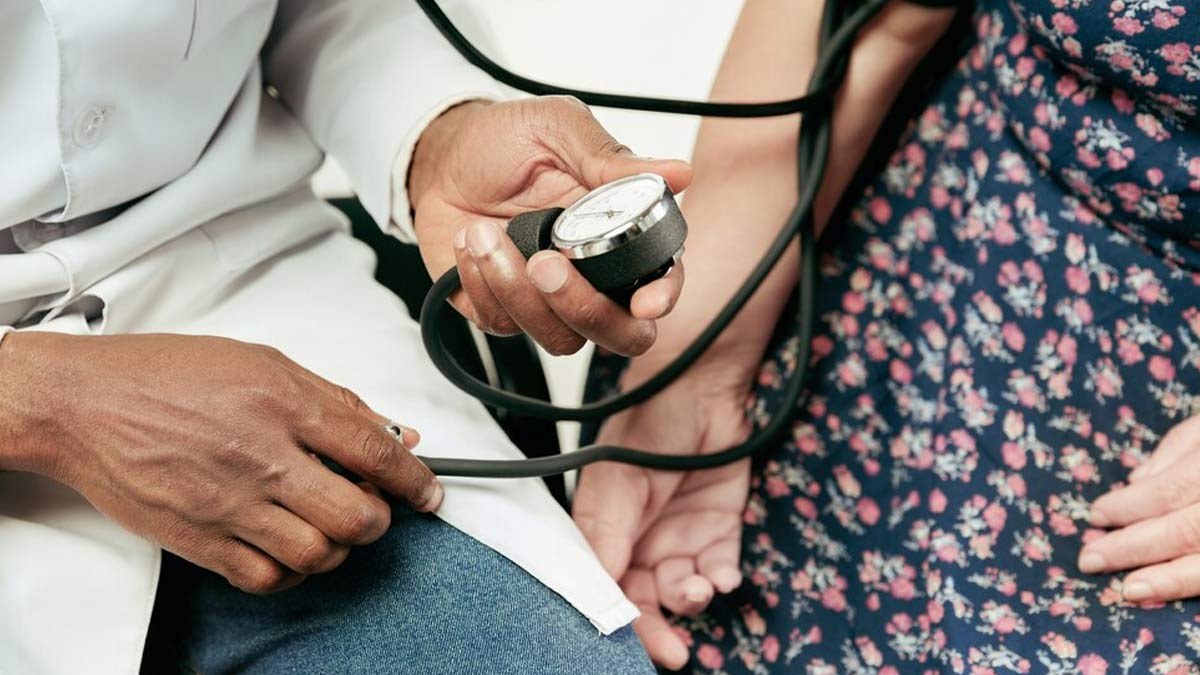
Pregnancy comes with several health problems, including preeclampsia, which is associated with 2–8% of pregnancy-related complications worldwide, according to StatPearls Publishing. It is characterised by high blood pressure and elevated levels of protein in the urine. In most cases, preeclampsia resolves on its own after childbirth. However, there is a rare condition called postpartum hypertension or postpartum preeclampsia, which occurs soon after childbirth. Let’s understand what the condition is and how to approach it.
Table of Content:-
Also Read: Preeclampsia: Natural Ways To Deal With It
Understanding Postpartum Hypertension And Its Causes

In an interaction with the OnlyMyHealth team, Dr Mukti Harne Paithankar, Consultant - OBGY, Infertility Specialist And Laproscopic Surgeon, Manipal Hospital, Gurugram, says that postpartum hypertension, characterised by elevated blood pressure after childbirth, poses significant health risks for both the mother and the baby.
"While pregnancy-induced hypertension typically resolves within the first few days postpartum, some women develop persistent or late-onset hypertension, which requires careful monitoring and management," she shares.
Unfortunately, the exact causes of postpartum hypertension are not fully understood. However, the doctor highlights several factors that may contribute to its risk. This includes:
- Pre-existing hypertension
- Gestational hypertension
- Preeclampsia
- Obesity
Additionally, the abrupt decrease in placental hormones after delivery can also impact blood pressure regulation, adds Dr Paithankar.
‘Early Detection Is Key’

When it comes to postpartum hypertension, one of the primary concerns is the increased risk of complications such as stroke, heart attack, kidney failure, and eclampsia (seizures), according to Dr Paithankar.
She says, "These complications can be life-threatening and may also interfere with maternal-infant bonding and impede the mother's ability to care for her newborn."
This is why early detection of postpartum hypertension plays a crucial role in managing and treating the condition.
Some of the steps that healthcare providers take include:
- Monitoring blood pressure closely during the postpartum period, especially in women with a history of hypertensive disorders during pregnancy.
- Watch out for symptoms such as severe headaches, visual disturbances, abdominal pain, and swelling.
Treatment Approaches

Treatment for postpartum hypertension may include antihypertensive medications, lifestyle modifications, such as dietary changes and increased physical activity, and close monitoring of blood pressure, says Dr Paithankar.
She adds that breastfeeding, if compatible with medication regimens, can also have beneficial effects on blood pressure control.
It is important to know that postpartum follow-up care is essential to monitor blood pressure trends and assess for any lingering complications.
Women with a history of postpartum hypertension are at an increased risk of developing chronic hypertension later in life, highlighting the importance of long-term cardiovascular health monitoring and risk reduction strategies, says Dr Painthankar, sharing that through comprehensive care and ongoing support, the adverse effects of postpartum hypertension can be minimised, promoting the health and well-being of both mother and child.
Also watch this video
How we keep this article up to date:
We work with experts and keep a close eye on the latest in health and wellness. Whenever there is a new research or helpful information, we update our articles with accurate and useful advice.
Current Version